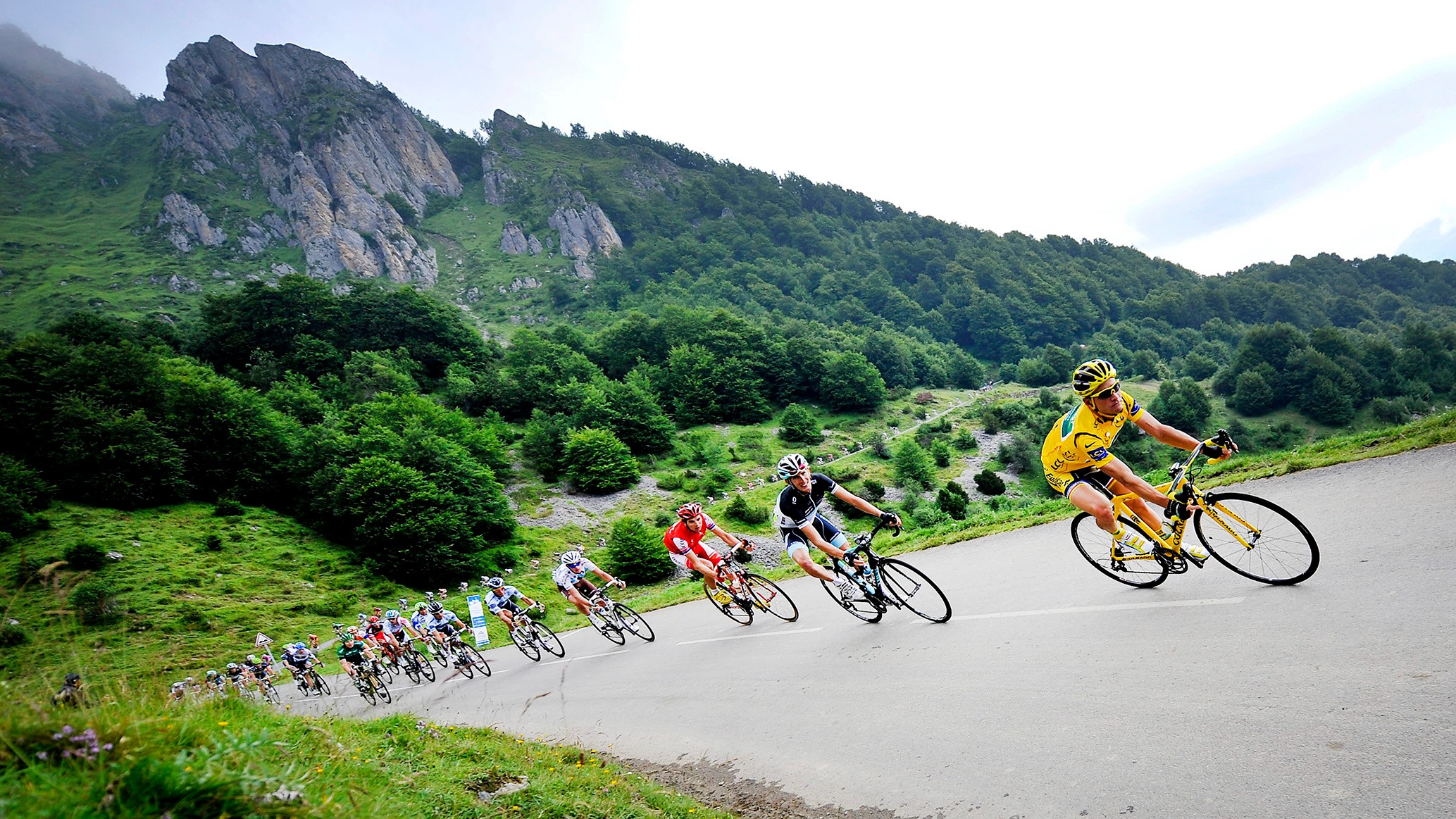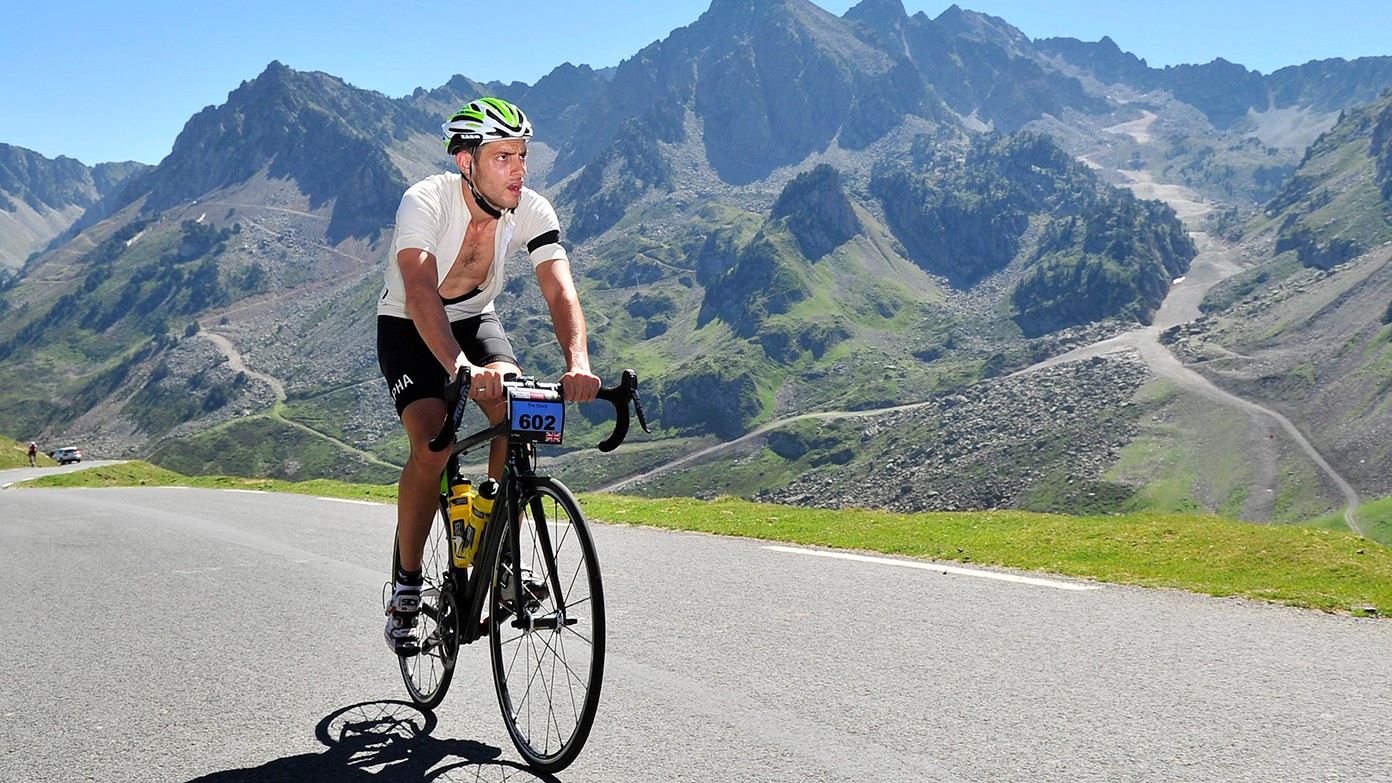Five Gruelling Tour de France Ascents that You Can Ride
Here's how to tackle the Tour’s most iconic stages

1. Alpe d’Huez

[not on 2016 route]
The definitive Tour de France climb. When it features in the Tour, more than a quarter of a million excitable fans cram on to its narrow, winding road inches from the faces of the competitors. The Alpe has been a regular in Tours gone by, and each of its famous 21 hairpins is marked with a sign bearing the names of past winners. “The Alpe is the glamour climb of the Tour de France,” says Suze Clemitson, cycling journalist and author of 100 Tours 100 Tales, “with a roll call of honour that stretches from the stage’s first winner Fausto Coppi in 1952 to French hope Thibaut Pinot in 2015.”
How to do it yourself: If you’re there on a Wednesday you can join the officially timed amateur ascent at 10am, and plenty of companies run organised tours to this part of the world, including More Than 21 Bends from its base in Bourg d’Oisans. It runs a week-long tour taking in several classic climbs along the way for £399 per person.
2. Col d’Aubisque

[not on 2016 route]
The Aubisque has played host to many classic Tour de France stages, and with 45 Tour appearances is the second-most visited mountain in the race’s history. “The Aubisque has seen more than its fair share of drama over the years,” says Clemitson, “but never more so than in the 1951 Tour when William Van Est – ‘Iron William’ – fell 70m into a ravine.”
How to do it yourself: Marmot Tours runs a six-day route. For £925 it also takes in the most famous Pyrenean climb: the Tourmalet.
3. Col du Tourmalet

[2016 stage 8]
Get the Coach Newsletter
Sign up for workout ideas, training advice, reviews of the latest gear and more.
Sitting at the heart of the Pyrenees, the Tourmalet has appeared in more Tours than any other climb. “Triumph and tragedy go hand in hand on its wild, rocky slopes,” Clemitson says. “This is where Eugene Christophe lost a Tour mending his broken forks in 1913, and Eddy Merckx launched a 120km solo raid and rode into Tour de France legend in 1969.”
How to do it yourself: pyreneescycling.com offers a six-day trip taking in the Tourmalet that includes a guide, half-board and transfers to and from Pau Airport for £490.
4. Mont Ventoux

[2016 stage 12]
Around 40km north-east of the historic city of Avignon lies the monstrous Mont Ventoux, a mountain that can legitimately stake its claim as the hardest of all the classic Tour de France climbs. “Ventoux will be forever wedded in the public’s imagination with the tragic death of Tom Simpson in 1967,” says Clemitson. “He collapsed on its barren, windswept slopes only
a few kilometres from the finish line he would never cross.”
How to do it yourself: Book a bed at Vélo Ventoux; situated in the picturesque village of Faucon at the base of the mountain. Its knowledgeable staff are only too happy to dish out cycling advice to their visitors.
5. Col du Galibier

[not on 2016 route]
The traditional route to the top is from Valloire on the north side, which incorporates an 18km ride at an elevation gain of 1,245m – in other words, it’s a beast. Clemitson says: “Rising to over 2,600km, it is often the highest pass in the Tour de France when the Prix Henri Desgranges is awarded to the first rider over the pass – in 2011, when the race finished atop the Galibier, it was the highest summit finish the race had ever seen.”
How to do it yourself: colconquerors.com offers long-weekend “high altitude” trips that include accommodation, food, transfers to and from Geneva Airport, plus three days of guided riding all for around £550.
